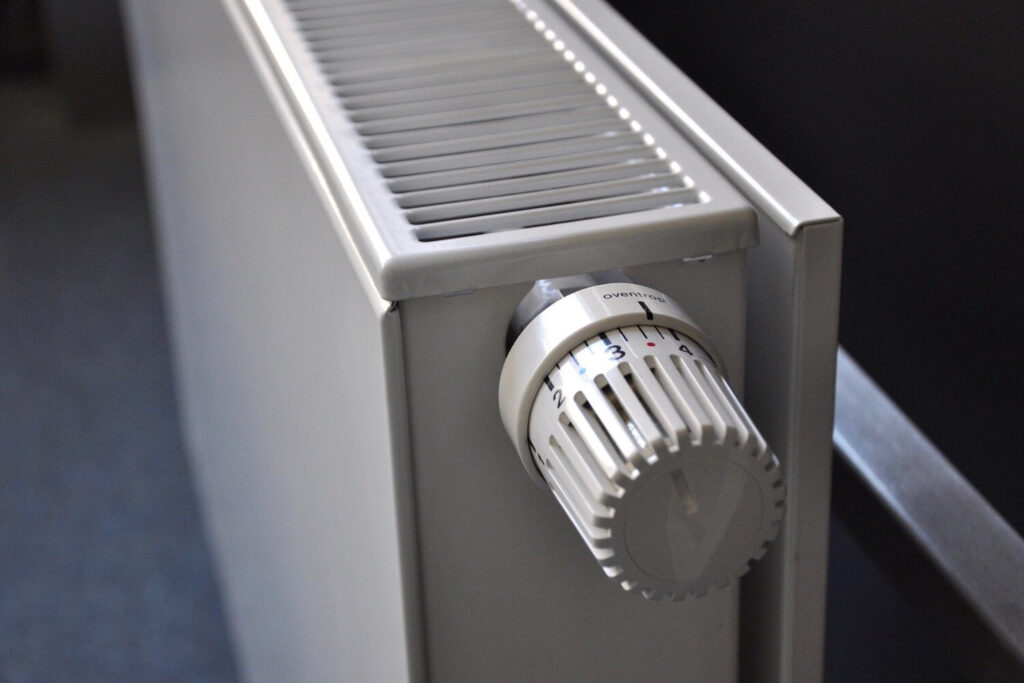Winter brings lots of cold and wet weather and I often feel like I’m chasing my tail trying to keep us dry and the house warm! I’ve tried lots of things to keep us warm (and reduce our heating bills) so I’ve got them all here for you so you can do the same.
By taking all these tips on board you are likely to have a safe and warm house this winter. However, nothing is for certain and you can’t predict when disaster will strike. It is always worth having insurance to make sure you are protected financially for all those “just in case” scenarios.
How To Insulate Your House For Winter
Everyone knows you need wall insulation, but what about the rest of the room? There are loads of areas in each room that you can add additional insulation to in order to keep the heat in and the cold out.
Window Insulation
Most people have curtains or blinds on their windows – but have you tried both? You can use blinds behind curtains for maximum insulation on the windows. Plus, it works great to blacking out the sun in the bedrooms in the summer months too.
Floor Insulation
You must also consider your flooring. While wooden or laminate flooring may look good and is easy to keep clean, in the winter it may make your house feel cold. Many houses have a basement or cavity for plumbing and wiring, and this allows a lot of heat loss through the floor. You can consider adding a large rug to rooms with wooden or laminate flooring, it keeps the heat in and is warmer to walk on in bare feet.

Preemptive Home Maintenance For Winter
Check The Heating Works
There’s nothing worse than realising you have a problem right at a crucial moment. Be sure to turn on your heating before the time of year of the ‘big freezes’, to ensure that everything is working correctly in advance. That way you have time to make any repairs without the extra expense of it being an emergency call out.
Bleed Your Radiators
You waste so much money by heating a radiator that isn’t efficient. When your radiator is on, feel the bottom and top, if it is cold in some places and warm in others you may need to bleed them. This will bring them up to the most effective and economical way of heating your home, and it’s something we do regularly.
Guttering And Drains
Before things get too cold you should clear out your guttering and drains to prevent leaks and flooding if it snows heavily – or just with the regular winter rain. They can get quickly blocked in the autumn with the constant falling leaves. While you are clearing them out be sure to check them over for any signs of weakness or faults. A little bit of work now can save a lot of stress and expense later.
Locate Your Stopcock
Time a minute to learn where your stopcock is, so that if the worst happens and a frozen pipe does burst, you can shut off the water supply as quickly as possible. This is not only useful in winter but can be helpful all year round in an emergency.

Temperature Control In Winter
Using a smart thermostat such as Hive or Nest will keep your house at a fairly steady temperature. For us, that is 16 degrees during the day and 13 degrees overnight. Maintaining a minimum temperature ensures the pipes don’t freeze, so although it may feel silly to have the heating come on if the internal temperature drops when you are out of the house – it is worth it. Although there is a cost associated with installing a smart thermostat, there is often an overall reduction in heating bills and increase in comfort.
This is also really important if you’re going away. Maintaining a steady temperature means your heating will likely come on at least once a day even for a short time, keeping the pipes clear and flowing and saving you from coming home to a burst pipe.

